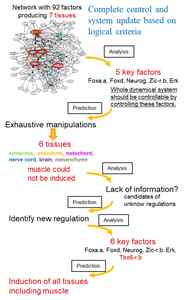- HOME
- Research
- Present Works
- Complete control of a gene regulatory network of ascidian embryo by a few factors identified by a mathematical theory.
Present Works
Complete control of a gene regulatory network of ascidian embryo by a few factors identified by a mathematical theory.
By the success of modern biology, we have many examples of large networks consisting of many species of bio-molecules and interactions between them. It is believed that the dynamics of molecular activities based on such networks are the origin of biological functions. To understand the dynamics of complex systems, we have developed Linkage Logic theory, by which key molecules to identify/control the dynamics of a whole system can be determined from information of the regulatory linkages alone. We have applied the theory to the gene regulatory network (GRN) for fate specification of seven tissues (epidermis, brain, nerve cord, endoderm, notochord, mesenchyme, muscle) in ascidian embryos. From the analysis we found that the dynamics of the network including more than 90 genes can be identified/controlled by only 5 genes (Foxa.a, Foxd, Neurog, Zic-r.b, Erk signaling). This implies that cell fate of ascidian could be controllable just by manipulating activities of the 5 factors, if the information of the GRN is complete. We verified our prediction by combinatorial experiments of knockdown and overexpression, and obtained the results that six out of seven tissues except for muscle could be induced by experimental manipulations of these 5 genes. These successful results, at the same time, suggested that the experimentally reconstituted GRN might be incomplete and lack information sufficient to reproduce muscle cells.
Here, we analyzed the GRN by combining linkage logic and experiments, and succeeded in updating the network system and to control the dynamics of the system completely. We utilized linkage logic theory as a tool to identify candidates of missing edges in the GRN. We found that one of the candidates does exist actually. From an updated version of the GRN, we identified 6 key factors (Foxa.a, Foxd, Neurog, Zic-r.b, Erk signaling, Tbx6-r.b). Then, we confirmed that manipulating the activity of the 6 factors was sufficient to induce all seven cell types.
In the study, the linkage logic provides two strong information: (1) a criterion to determine whether the network structure contains sufficient information to fulfil expected functions, and (2) candidate missing edges if the network information is not sufficient. We believe that our approach combining the linkage logic and experimental verification will promote understanding for many biological systems in life sciences.

